
Frozen humans could be brought back to life in next 50 years claims expert
Experts may have found a way to resurrect frozen humans in 50 to 70 years. It comes after a cryonics company was able to revive an extinct worm from 46,000 years ago, leading them to believe the method could be applied to humans. "Cryonics is a scientifically based, legal technology for preserving humans and animals in a state of deep cooling in the hope that in the future they will be resuscitated and, if necessary, cured and rejuvenated," Russian cryogenics company KrioRus explained. "For legal reasons, human cryopreservation can be carried out only after legal death." KrioRus shared how the dead patient is "immersed into a low-temperature medium where almost all chemical reactions are stopped." The first ever cryopatient, American professor James Bedford, has been preserved for almost 50 years "with no sign of change or deterioration." "In the prognosis of modern science, a cryopatient can indeed be someday revived and return to life," they said. Many more people have opted to freeze their deceased pets, with costs dependent on pet size, species and distance to the facility among other factors. A dog is said to cost around $25,000. The company claims to have cryopreserved 92 people but disclaimed that for humans to be resurrected, there must be significant progress in the medical field. "Cryobiological laboratories are few, there are no large ones at all," CEO Valeriya Udalova told MailOnline. "Even the famous laboratory 'XXI Century Medicine' is a small organization." She continued: "But even in such a deplorable situation, remarkable experiments have already been made, for example, on reversible cryopreservation of a rat kidney using gas persufflation with nanoparticles and induction heating." Sign up for our free Indy100 weekly newsletter Have your say in our news democracy. Click the upvote icon at the top of the page to help raise this article through the indy100 rankings.
2023-09-06 21:23
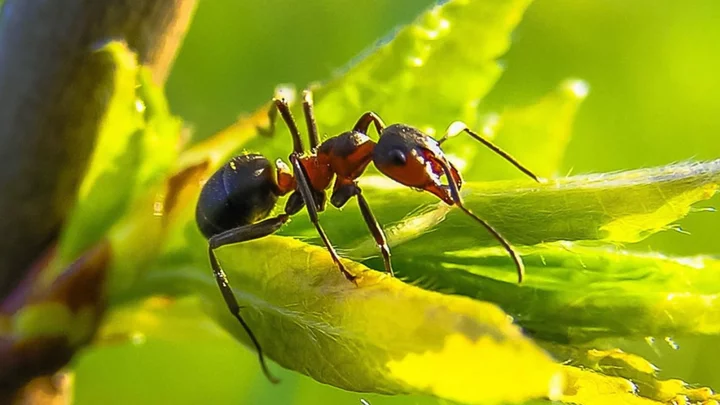
One of the biggest 'cities' ever on Earth was not built by humans
Scientists who were attempting to map an abandoned ant hill didn't expect to find a mega-city when they shot the hill full of cement, but that's exactly what they discovered. Over three days, scientists pumped 10 tons of cement into the empty ant hill to map its networks. After the cement dried, they dug for weeks around it. The excavation revealed an incredibly impressive, intricate, and bizarre ant mega-city. The mega-city was a truly colossal undertaking. A video revealed that the ants created the structure by displacing 40 tons of dirt. And it really is a mega-city. The ants networked to disposal pits and fungus gardens. Each tunnel was designed to ensure thorough ventilation and reduce transport time. The narrator disclosed the truth. That despite the complex nature of the mega-city, there was no single architect of any - but it was down to the collective will of the colony. "Everything looks like it has been designed by an architect a single mind but of course, that isn’t true," they said. "This colossal and complex city was created by the collective will of the ant colony, the super organism." The short resurfaced clip is from a much longer piece called Ants! Nature’s Secret Power. You can watch the full documentary here. Our city designers should take a few notes. Sign up to our free Indy100 weekly newsletter Have your say in our news democracy. Click the upvote icon at the top of the page to help raise this article through the indy100 rankings.
2023-09-06 20:26

Curly hair may have been critical to human evolution
Curly hair may have been absolutely critical to humans evolving millions of years ago, scientists have discovered. In fact, having curly hair could have been the key reason as to why humans developed, grew taller and came to have larger brains. It’s all to do with regulating body temperature, according to a new study by researchers at Penn State University. Given that hair can help to protect the head from the sun’s rays, it’s thought that thicker, curlier hair types could have been key to human life progressing in Equatorial Africa. Scientists recreated the kinds of conditions that early humans would have experienced, using wigs featuring different hair types on models. They found that curls were most effective in keeping the models cool in an environment measuring 86 degrees Fahrenheit (30 degrees Celsius) and 60 per cent humidity. Tina Lasisi is the study's lead author. She spoke to Newsweek about the findings and said: "We hypothesized that tightly curled scalp hair would provide some benefits, but the extent of these benefits was uncertain. "Previous studies on mammalian coats have shown that hair can limit the amount of sunlight reaching the skin, but we were particularly surprised by the significant reduction in solar heat radiation impact provided by tightly coiled hair.” The reduction in heat caused by tight curls could have led to the development of larger brains. "Once humans developed large brains, they could employ other behavioral and social strategies to cope with heat, potentially diminishing the relative advantage of curly hair," she said. "This could have led to a diverse distribution of hair textures worldwide. Furthermore, since straight hair better retains heat, populations in colder environments may have experienced selective pressure for straight hair." She added: "Future research should aim to answer these questions by incorporating our data into mathematical models of human physiology or conducting experiments with human subjects who have different hair textures to examine the impact on their thermal regulation.” Sign up for our free Indy100 weekly newsletter Have your say in our news democracy. Click the upvote icon at the top of the page to help raise this article through the indy100 rankings
2023-09-06 00:52
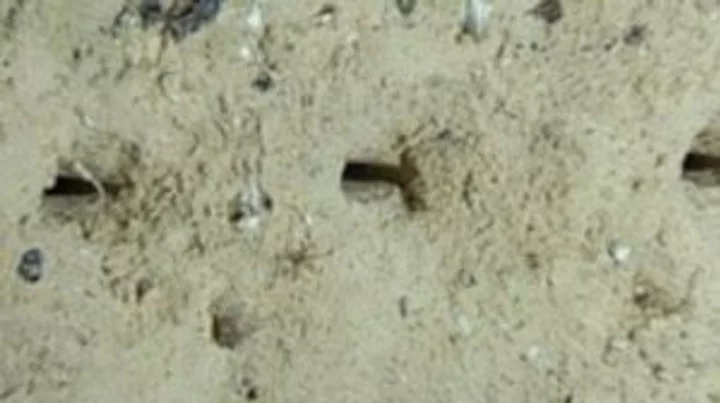
Mysterious 'golden egg' discovered at the bottom of the ocean leaves scientists baffled
A mysterious golden object has been found at the bottom of the ocean by scientists exploring the Pacific Ocean and it has left them baffled. The discovery was made on 30 August when a team of experts from the National Oceanic and Atmospheric Administration (NOAA) were taking a closer look at an underwater volcano 250 miles off the coast of Alaska. Experts, and members of the public viewing the live stream, caught a glimpse of the unusual gold orb two miles beneath the surface lodged into the side of the volcano and were left puzzled over what it could be. It was found thanks to the NOAA’s Seascape Alaska 5 expedition that is currently mapping the seafloor of the Gulf of Alaska. Those who made the discovery at the foot of the volcano also noted there was a mysterious hole in the side of the orb, with one researcher suggesting on the live stream that “Something tried to get in...or to get out”. Scientists bantered back and forth about what the egg-like object could be and ultimately decided to take a sample that could be analysed. The texture of the orb was not as they had expected and was more of a silky, delicate consistency. An arm from the robotic vehicle was used to suction the orb in order for scientists to determine its origins with laboratory testing. The NOAA Seascape Alaska 5 expedition is due to end in mid-September and aims to fill the gaps that experts have about the sea beds off the USA’s west coast. It began on 24 August in Kodiak, Alaska and will come to an end in Seward, Alaska on 16 September. Sign up to our free Indy100 weekly newsletter Have your say in our news democracy. Click the upvote icon at the top of the page to help raise this article through the indy100 rankings.
2023-09-05 22:56

This hidden iPhone emergency setting could potentially save your life
A podcast host is going viral after revealing a little-known iPhone hack that could potentially save your life. Morgan Absher, from Two Hot Takes, demonstrated by how heading into your settings and altering the 'Emergency SOS' buttons, you can easily dial 999 should you need to. "I’m constantly scared about getting kidnapped. Getting kidnapped is my biggest fear", she explains of how she learnt the hack. By turning it on, users can choose to either press and hold their volume and power buttons simultaneously to call the emergency services, or press the power button five times for the same result. Sign up to our free Indy100 weekly newsletter
2023-09-05 18:50

Gamers are boycotting Starfield because players can add pronouns
A handful of gamers have erupted across social media due to the option to select pronouns for characters in the game Starfield. The role-playing game (RPG) allows players to customise their characters, including deciding which pronouns they have. The feature was discovered after the game went live on Friday 1 September for those who had pre-ordered. Bethesda, who have previously made games such as The Elder Scrolls V: Skyrim and Fallout 4, allowed Starfield players to select they/them pronouns for non-binary characters if they so pleased. But a small number of notable gaming streamers seemed extremely upset over the decision. They accused video game publishes of going “woke”. Streamer Herschel ‘Guy’ Beahm IV, known by his online alias Dr Disrespect, was outraged both at the pronoun option and the head of publishing at Bethesda, Pete Hines, having his pronouns in his Twitter/X bio, saying “it all makes sense now. Beahm also shared with his viewers that he had tried to work with Bethesda prior to the release of Starfield, but was told no due to “past controversies.” Another streamer known online as 'Heel vs Babyface', revealed his sheer lack of imagination when he screamed at his camera for two-and-a-half minutes claiming the choice of pronouns meant he was being “dragged out” of the immersive experience of the game. “Do you want to get immersed in our world? Yeah well guess what, f**king pronouns,” he screamed. “F**king gender ambiguity. F**king current-day California s**t, because that’s all we f**king know.” As expected, many mocked those who were upset over a two-second feature in a video game. One user called Heel vs Babyface “pathetic”: Others told him to “grow up”: Outside of streamers who are unable to comprehend an experience outside of their own, Starfield has received less than favourable reviews from critics for valid reasons such as poor performance and calling the title “disjointed”. Sign up to our free Indy100 weekly newsletter Have your say in our news democracy. Click the upvote icon at the top of the page to help raise this article through the indy100 rankings.
2023-09-04 23:20
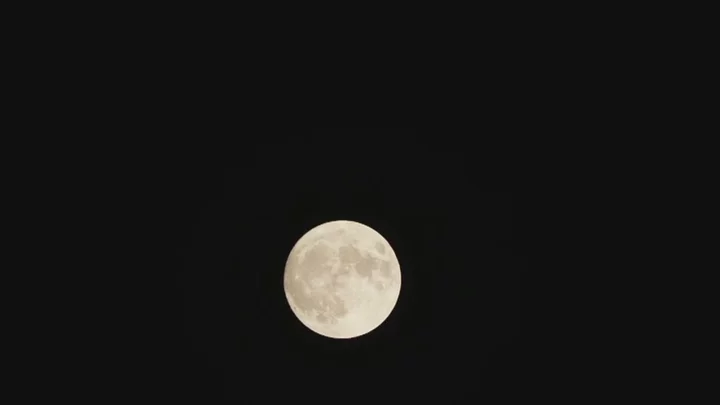
The Moon is slowly drifting away from Earth and its beginning to impact us
The Moon is a constant in the night sky, but all is not actually as it seems. It turns out that scientists have discovered the Moon is drifting away from Earth, and it’s changing everything we thought we knew about our planet’s relationship with its only natural satellite. It’s also having a very real impact on the length of days on our planet – albeit at an incredibly slow rate. By moving away from Earth over the course of millions of years, the Moon is simultaneously making the length of the average day longer. A study by a team at the University of Wisconsin-Madison focused on rock from a formation aged at 90 million years. By doing so, they were able to analyse the Earth’s interactions with the Moon 1.4 billion years ago. It turns out that the Moon is moving away from Earth at us at 3.82 centimetres a year. That means that, eventually, it’ll result in Earth days lasting 25 hours in 200 million years time. Stephen Meyers, who is a professor of geoscience at the University of Wisconsin-Madison, said: “As the moon moves away, the Earth is like a spinning figure skater who slows down as they stretch their arms out.” He added: “One of our ambitions was to use astrochronology to tell time in the most distant past, to develop very ancient geological time scales. “We want to be able to study rocks that are billions of years old in a way that is comparable to how we study modern geologic processes.” It’s not the only story that changes our understanding of the Moon recently. Scientists have also just uncovered billions of years’ worth of secrets buried beneath the surface of the moon – all thanks to China’s space programme, which has uncovered hidden structures which can help us start to piece together the Moon’s past. Sign up for our free Indy100 weekly newsletter Have your say in our news democracy. Click the upvote icon at the top of the page to help raise this article through the indy100 rankings
2023-09-04 20:24
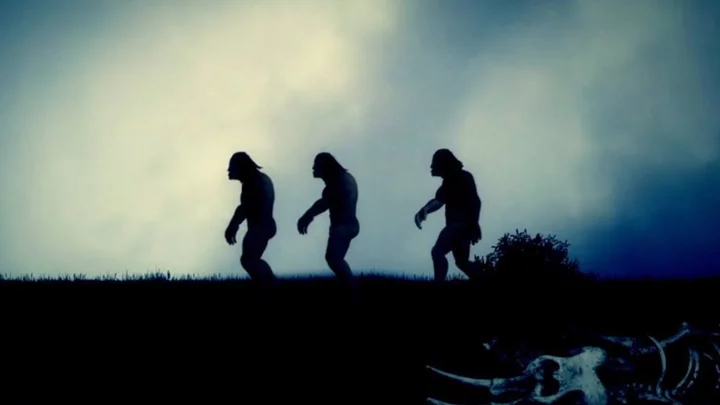
The terrifying time our early ancestors almost became extinct
New research has shown that our early ancestors almost went extinct some 900,000 years ago. Using a new method called FitCoal (fast infinitesimal time coalescent process), researchers analysed the likelihood of present-day genome sequences to project current human genomic variation backwards in time. They applied the technique to the genomes of 3,154 people from 10 African and 40 non-African populations, and found a massive crash in genetic diversity during the transition between the early and middle Pleistocene. “Results showed that human ancestors went through a severe population bottleneck with about 1,280 breeding individuals between around 930,000 and 813,000 years ago,” the study authors wrote in the journal Science. “The bottleneck lasted for about 117,000 years and brought human ancestors close to extinction,” they say. Wiping out roughly 98.7 percent of the ancestral human population, “the bottleneck could also have increased the inbreeding level of our ancestors, thus contributing to the 65.85 percent loss in present-day human genetic diversity,” explained the researchers. This probably happened because of changes in the global climate as short-term glaciations became longer-lasting, triggering a drop in ocean temperatures, prolonged drought, and the loss of large numbers of species that humans might have relied on for food. Then, around 813,000 years ago, populations finally recovered, with a 20-fold increase in numbers because of fire combined with the return of warmer temperatures, researchers reckon. What a near miss, eh? Sign up to our free Indy100 weekly newsletter Have your say in our news democracy. Click the upvote icon at the top of the page to help raise this article through the indy100 rankings.
2023-09-03 19:20

There’s an exact number of people required to colonise Mars – and it may surprise you
When he’s not making radical, controversial changes to Twitter/X, Elon Musk is eyeing up plans to colonise Mars in the coming years with his company SpaceX – and now a team of researchers at the Virginia-based George Mason University claims it has found out the minimum number of people needed to successfully takeover the red planet. In the study – the results of which were published to the research platform Arxiv in August - the academics established a model to find out the ‘initial population size’ required on Mars to produce a “stable colony size”. They ran the model five times for 28 Earth years, and increased the population by 10 people each time - from 10 to 170 individuals. “Given that there are four critical tasks that are needed continuously (air, water, food production and waste removal) in addition to handling disasters, and two skills needed for each task, we chose a population size of 10 as the minimum needed for a ‘stable’ colony size. “The population is allowed to dip below 10 as long as it bounces back within 1.5 years, or the amount of time between Earth resupply shuttles.” The test found all initial population sizes over 50 were able to sustain a population of at least 10 people across the time period, and that the bare minimum number to meet that criteria is at least 22 people. There you go, Elon. You’re welcome. It’s certainly a decrease in the minimum number previously suspected by French researcher Jean-Marc Salotti in June 2020 – that was the rather astronomical figure (sorry) of at least 110 people. And the Virginia researchers didn’t stop there, either, as they also took a look at the personality types best placed to handle the highly stressful environment that is living on a completely different planet. There’s four: “agreeables”: low competitiveness and aggressiveness, and not fixated on “stringent routine “socials”: medium competitiveness, extroverted, require social interaction but not fixated on stringent routines “reactives”: medium competitiveness and fixed on stringent routines “neurotics”: high competitiveness, highly aggressive and a “challenged ability to adapt to boredom or a change in routine” Perhaps unsurprisingly, the “agreeables” came out on top. The researchers added: “In all runs, the Agreeable personality type was the only one to survive the full duration of model runs. This is likely because it has the highest coping capability.” Their results found that while the “neurotic” was “most likely to fail”, and both “reactives” and “socials” fluctuated, the “agreeables” was the “most resilient”. “While this model assigns equal numbers of each personality type, future work could try adjusting the proportion of each to possibly lead to a lower required minimum initial population. For example, a crew of all Agreeable personalities may be more successful,” they suggest. Musk, meanwhile, said earlier this year that he was optimistic humans landing on Mars was "possible" in the next five years, and "highly likely" in a decade. Sign up to our free Indy100 weekly newsletter Have your say in our news democracy. Click the upvote icon at the top of the page to help raise this article through the indy100 rankings.
2023-09-03 00:21

The strange way Elon Musk spent the night after he made his offer to buy Twitter
It is no secret that Elon Musk is a quirky individual, so it is no surprise that how he chose to spend the evening after he made his offer to buy Twitter was rather odd. According to Grimes, his on-off girlfriend, the tech mogul stayed up all night playing video games after putting the offer in for the app now known as X. Grimes shared the anecdote to Walter Isaacson for his upcoming biography on the world's richest person — an excerpt of which was published by the Wall Street Journal. She said he flew to Vancouver to meet her parents but then stayed in the hotel because he was in "stress mode" and played the fantasy game Elden Ring on a laptop he had with him. "Instead of sleeping, he played until 5:30 in the morning," Grimes told Isaacson. Since purchasing Twitter last year, Musk has brought in a number of changes including making users pay for their verifying blue ticks and changing the name and logo to X. It seems more changes are afoot, and he recently announced the possibility of video and audio calls on the social media platform. As for playing video games all through the night... whatever calms you down, we guess. Sign up to our free Indy100 weekly newsletter Have your say in our news democracy. Click the upvote icon at the top of the page to help raise this article through the indy100 rankings.
2023-09-02 18:59

A new Titanic expedition is being planned – and the US government wants to stop it
You would think people would read the room, and learn from the tragic and fatal implosion of the Oceangate submersible in July, yet there’s already plans for another trip down to the Titanic wreckage next year – and the US government doesn’t want it to go ahead. Two months after the Titan sub crushed underwater, killing five people, officials are trying to stop Georgia-based firm RMS Titanic Inc. (RMST) from trying to recover further historical items from the wreckage to add to its collection of artifacts it exhibits. While RMST owns the salvage rights to the doomed liner which infamously struck an iceberg and sank in 1912, the US government is drawing attention to both federal law and an international agreement which classes the shipwreck as a hallowed gravesite. According to the Associated Press, the government states in court documents filed on Friday that RMST is “not free to disregard” the “validly enacted federal law” mentioned above, but it nonetheless is “its stated intent”. “[The shipwreck] will be deprived of the protections Congress granted it,” its lawyers argue. RMST, meanwhile, says it looks to take images of the entire site, including areas where “deterioration has opened chasms sufficient to permit a remotely operated vehicle to penetrate the hull without interfering with the current structure”. Provided the objects are not “affixed to the wreck itself”, artefacts recovered could include items from “inside the Marconi room” – that’s the room where the ship’s wireless radio was used to communicate with other vessels and those on the shore. RMST also insists they do not plan to cut into or detach any part of the wreck “at this time”, but that they don’t plan to seek a permit from the National Oceanic and Atmospheric Administration (NOAA) – something the US government says it needs in order for the firm to move forward with its plans. The NOAA oversees the public interest in the Titanic, and on its website accepts it “may be in the public’s interest to salvage some artifacts” from the wreckage. “NOAA therefore balances this value with the Congressional intent to manage the wreck site as a maritime memorial consistent with the International Agreement, which proclaims that the Titanic shall be recognized as a memorial to those who perished. “NOAA has concluded that the recovery of many of the artifacts from the debris field (with certain exceptions) is consistent with the NOAA Guidelines and the International Agreement, including the in situ preservation policy. “However, NOAA has also determined that recovery of artifacts from within either of the two hull sections is not consistent with the purposes of a maritime memorial.” It’s not the first time the US government and RMST have had a legal battle over the ship, as back in 2020 a similar case concerning a planned expedition made its way to the courts, before the coronavirus pandemic scuppered proposals and the issue didn’t go any further. Sign up to our free Indy100 weekly newsletter Have your say in our news democracy. Click the upvote icon at the top of the page to help raise this article through the indy100 rankings.
2023-09-02 00:18
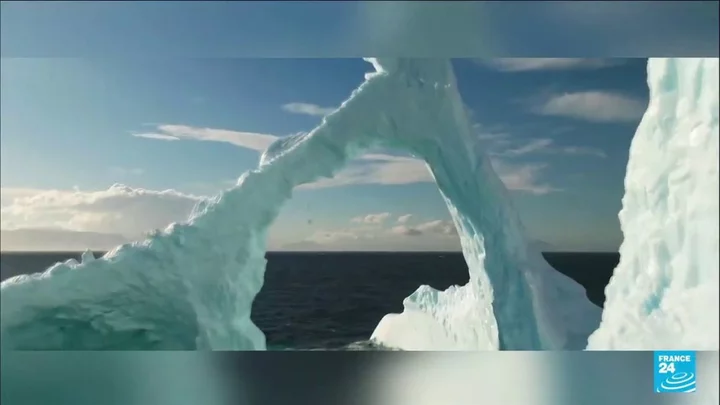
Scientists have discovered a new 'Antarctica' accent
Antarctica might be the only continent on Earth with no natural human habitation, but it’s emerged that an “Antarctica accent” is very much a thing. Despite having no locals, thousands of scientists have made up an ever-changing population in research stations over the years. The continent is so isolated and the level of interaction between researchers is so intense, that a common accent is beginning to emerge there despite people coming from different parts of the world. At its busiest points in the year during the summer, Antarctica is home to around 5,000 people. Only around 1,000 people live there during the winter months. The idea of accents changing due to human interaction on Antarctica is no different to the phenomenon seen throughout history at a glacial pace. However, given the very specific sample size, it’s an opportunity for scientists to study it at a much quicker rate and on a much smaller scale. Experts at the Ludwig Maximilian University of Munich published a study in 2019 which focused on the change in accents observed in 11 people who took part in the British Antarctic Survey. @human.1011 There’s an Antarctic Accent! #language #linguistics #english #antarctica Of the 11 who were studied, eight came from England, one from the US, one from Germany and one from Iceland. Their voices were recorded every six weeks, and the team found that over time they developed longer vowel sounds. There was a physical change too, with participants pronouncing the “ou” sound in the front of their mouths rather than the back of their throats. Speaking to IFL Science, Jonathan Harrington, study author and Professor of Phonetics and Speech Processing at the Ludwig-Maximilians University of Munich said: "The Antarctic accent is not really perceptible as such – it would take much longer for it to become so – but it is acoustically measurable. "It's mostly an amalgamation of some aspects of the spoken accents of the winterers before they went to Antarctica, together with an innovation. It's far more embryonic [than conventional English accents] given that it had only a short time to develop and also, of course, because it's only distributed across a small group of speakers.” Sign up for our free Indy100 weekly newsletter Have your say in our news democracy. Click the upvote icon at the top of the page to help raise this article through the indy100 rankings.
2023-09-01 20:52
